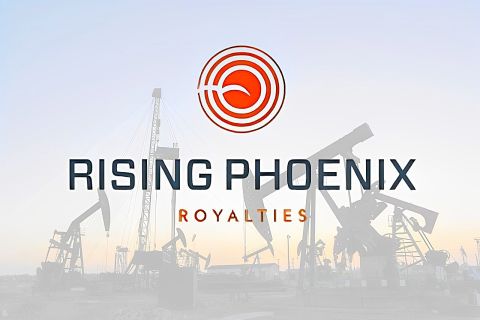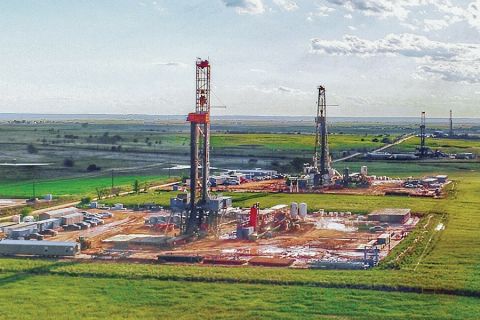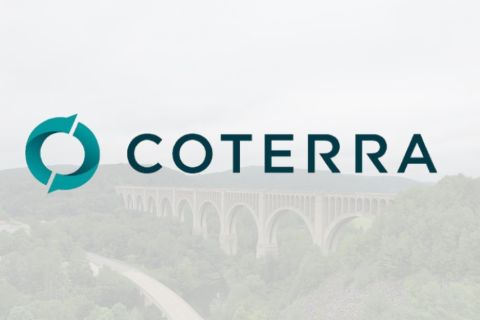The full scope of the E&P business’ reliance on high tech often is misunderstood. It is a business of hard labor and major construction projects. However, it also uses some of the most sophisticated technologies to achieve success. Finding hydrocarbons involves some of the world’s most powerful mathematics, physics, chemistry, engineering, and visualization technologies. After all, the hydrocarbon prize often is tens of thousands of feet below the earth’s surface and can be covered in thousands of feet of water or ice.
E&P’s raw material cannot be purchased; it must be found first. Therefore, predicting where hydrocarbons could be located is essential. To be profitable in the long term, an E&P company must replace the reserves it produces. Equally important is the ability to discern how to turn new discoveries into profitable production, which moves E&P companies along the continuum to the appraisal and development (A&D) phase.
A&D arguably is the most pivotal point in the energy value chain from a business perspective since a “resource” is not a “reserve” until it can be produced economically. Companies must evaluate what it will take to deliver the hydrocarbons to market. Questions must be asked, such as:
• How much investment will it take?
• How long will the process take?
• What rate of production is best?
• What kind of processing is required?
This part of the business demands technology to design the facilities, estimate the cost, and build them as quickly as

Data needs to be integrated throughout the E&P life cycle. (Image courtesy of AspenTech)
possible. Investments can run into the billions of dollars for a major development. For example, an LNG liquefaction facility alone can cost US $5 billion to $10 billion. In addition, there can be billions of dollars more for platforms, subsea completions, development wells, separation facilities, water handling, gas processing, pipelines, pumps, compressors, etc., that are needed to supply the LNG plant. Therefore, managing cost and schedule efficiently to achieve best-in-class performance is a major challenge.
A&D sub-processes
Examine the three crucial sub-processes at the A&D phase:
1. Conceptual Engineering – Screening development options and selecting a good starting point. Early in the appraisal process there is a need to generate consistent cost estimates for a number of different development scenarios. At this time, there can be a fair degree of uncertainty about the reservoir size, composition of the hydrocarbons, and the flow rate. There often are several options for development such as platform versus subsea completion, using third-party processing facilities or building new ones, processing offshore versus onshore, and various combinations.
The challenge is to rank development options based on realistic engineering and consistent cost estimating. During appraisal, the operator is drilling wells and doing geologic analysis to minimize the uncertainty. As a result, new information always is coming in. The key challenge is to create a cost-effective design basis from the many alternatives, one that will be flexible enough to handle the remaining uncertainty. The time for appraisal is not specific; it depends on many factors such as the success of delineation drilling and governmental/regulatory approval of a development plan.
2. Basic Engineering – Using front-end engineering design (FEED) to select the basis of design. While the conceptual engineering sub-process delivers a short list of options, the next step, FEED, sometimes referred to as basic engineering, evaluates those options in more detail to determine and select the best one. At this stage, an owner-operator typically will begin to engage with one or more engineering contractors. Questions that must be considered include: What are the risks of each technology solution? Is the schedule realistic? What are the critical path components of the project? What are the safety and environmental implications of the development? Communication between disciplines and across multiple corporate boundaries adds to the challenge and is further compounded by the hurdles of obtaining the necessary government and financial approvals for the development plan.
Once these concerns are addressed, the underlying engineering design tools used in FEED are the same as those used in the conceptual design phase. Expert users extend the simulation models with details for the equipment designs and technologies to be used to provide accurate specification for heat exchangers and other equipment. This improves the granularity of the cost estimates and identifies problems with schedules and lift requirements. Complexity increases as the design progresses and the volume of specifications data grows extensively, with more disciplines, people, and companies involved.
Integrating data and workflow ensures everyone has the latest information, which minimizes the risk of redoing work while making the transition to operations smoother. This integrated approach has resulted in companies seeing 20% to 30% productivity gains, which translates into recovering first oil earlier. Even with only one month acceleration, it means millions of dollars in cash flow and improvement in overall project return.
3. Detailed Engineering – Select and work with detailed engineering and construction firms and hand over to operations. The work completed in the basic engineering process is the starting point for detailed engineering and construction. During this step, there are multiple firms involved (usually around the world on major projects), and an exponential increase in information about the facilities being designed and built. Owners often will employ a general contractor to assist in this process, but owners will have a keen interest in the process since it is their money at risk.
To achieve better oversight, owner-operators manage the contractors involved (via the general contractor if used) to ensure they have the latest information and remain on schedule and within budget. In addition, they are particularly interested in the detailed engineering work around the major pieces of equipment, any risk for technologies that are new or being used in unique ways, and critical path items. While every effort is made to minimize design changes at this stage, it is critical that changes are communicated to all parties involved to ensure that everyone works from the same information.
As such, owners and contractors increasingly are looking to implement best-practices and engineering software technologies that seamlessly support these activities, while creating a start-up plan to hand over to the operating groups. As part of the FEED process, studies are completed to ensure optimal operability of the design, that fluids flow in the process as expected, and that safe operations and environmental compliance are achieved.
The final step in the A&D process is the handoff from engineering and construction to operations. Here the seamless aggregation of information from many companies, disciplines, and suppliers, and the ability to have it in a usable format for operators in startup and commission, is critical. They need to have accurate documentation in the form of simulation models, “as built/designed” drawings, equipment lists, process flow diagrams, and process and instrumentation diagrams. The models are used create the basis for operator training systems, control system testing, and the start-up sequencing activities.
Recommended Reading
Diamondback Touts Land, Cheap Gas to Lure Data Centers to Permian
2024-11-05 - With 65,000 land acres, cheap natural gas and an abundant produced water supply, Diamondback wants to lure power-hungry data centers to West Texas.
SM Kicks Off Dean Wildcatting With 918 Boe/d Choked IPs
2024-11-04 - Operator SM Energy is constraining IPs to not overwhelm its produced-water facilities.
Rising Phoenix: The Anti-Permian Minerals Firm Buying … Permian
2024-09-13 - Rising Phoenix Minerals CEO Jace Graham said his boutique firm isn’t getting any bigger: The company doesn’t need a squad of infantry when “we’ve got a team of snipers.”
Midcon Momentum: SCOOP/STACK Plays, New Zones Draw Interest
2024-09-03 - The past decade has been difficult for the Midcontinent, where E&Ps went bankrupt and pulled back drilling activity. But bountiful oil, gas and NGL resources remain untapped across the Anadarko, the SCOOP/STACK plays and emerging zones around the region.
CEO: Coterra Drops Last Marcellus Rig, May Halt Completions
2024-09-12 - Coterra halted Marcellus Shale drilling activity and may stop completions as Appalachia waits for stronger natural gas prices, CEO Tom Jorden said at an industry conference.
Comments
Add new comment
This conversation is moderated according to Hart Energy community rules. Please read the rules before joining the discussion. If you’re experiencing any technical problems, please contact our customer care team.





